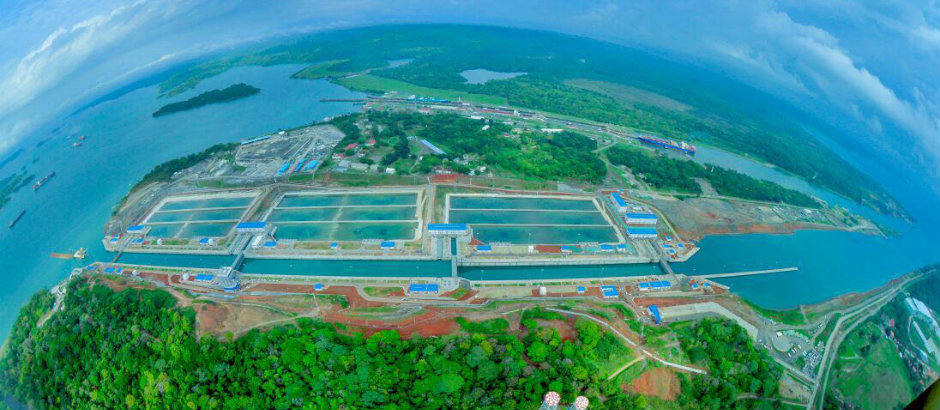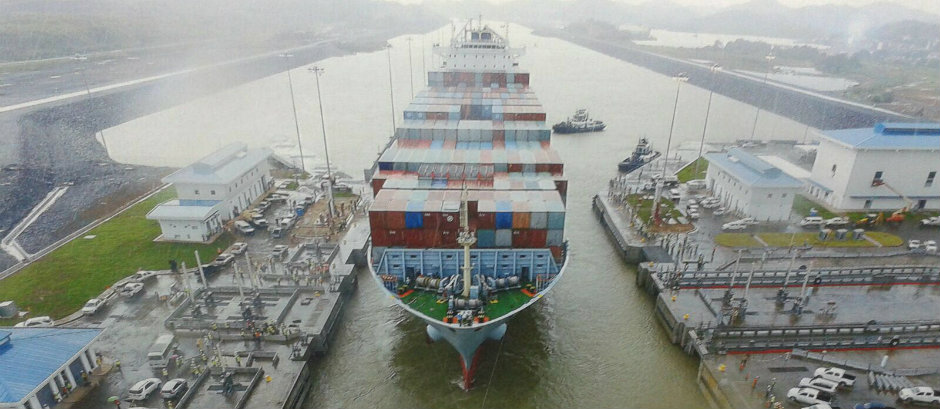Leonardo-Finmeccanica 23 August 2016
The Panama Canal’s new set of locks, inaugurated on 26 June, is an impressive engineering project that involved global companies from all over the world, including Leonardo-Finmeccanica. This work impacts the international maritime trade route scenario, allowing for the expansion of the canal, which splits the American continent in two and unites the Atlantic and Pacific Oceans.

Leonardo-Finmeccanica designed and supplied a turn-key Automation and Control system, including control rooms for operation supervision, which allows for the complete automatic operation of the new set of locks designed to create a third and wider transit line. Installed on both the Atlantic and Pacific side of the canal, the locks permit the passage of ships up to 366 metres in length, with over 13,000 containers aboard, lifting them up to 27 metres, in about two hours, from the Ocean level up to the Gatun lake level (the intermediate artificial basin between the two seas) and vice versa. This allows for the doubling of the canal’s transit capacity, with a direct impact on economies of scale and international maritime trade.

The success of this highly critical project of international scope is proof of Leonardo-Finmeccanica’s ability as a System Integrator to satisfy the specific needs of its customers, with cutting-edge solutions, able to safeguard the investments from both the economic and the technological point of view.

The solution designed and implemented by Leonardo-Finmeccanica is appreciated for its reliability and flexibility; being easily programmed and customised to suit the client needs, while showing an open architecture, the solution assures high modularity and expandability, as well as high performances, availability. In numbers, the system manages more than 40,000 input / output physical signals and over 200,000 historic tags (the number of tags in the control system identifies the entity and a project’s high quality); includes more than 100 automation cabinets, four Control Rooms, over 100 Operator stations and allows for over 1,200 possible combinations of ship movements along the channel.

